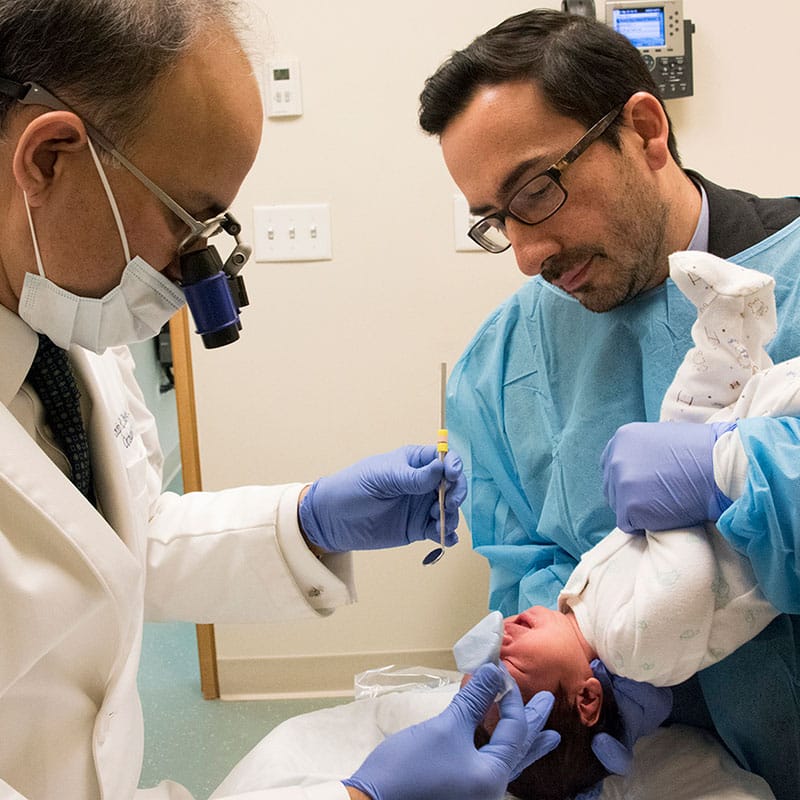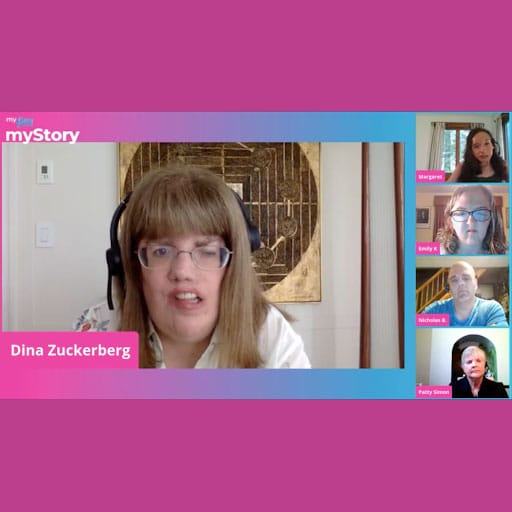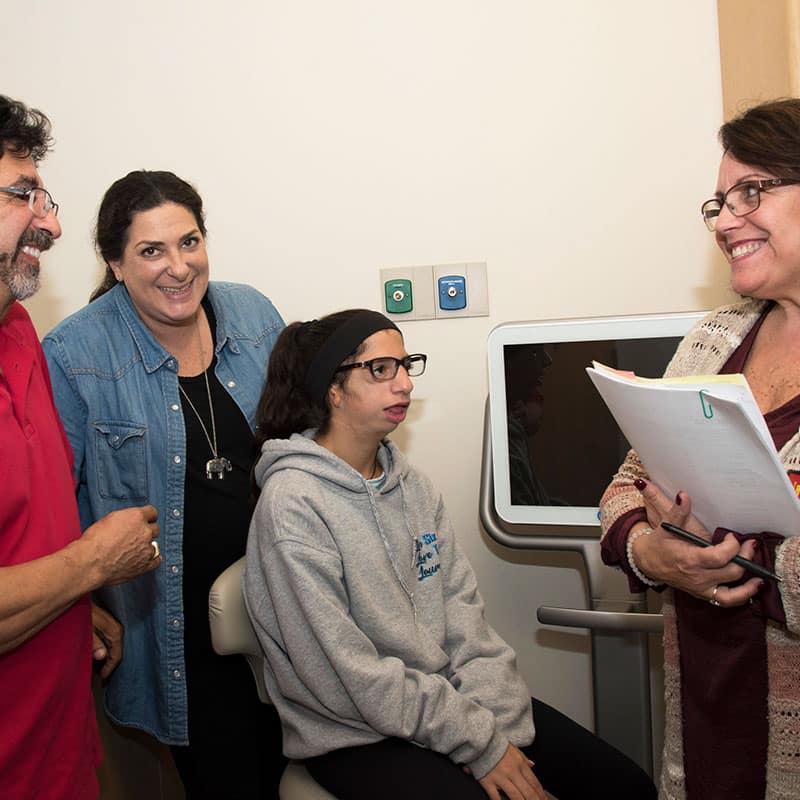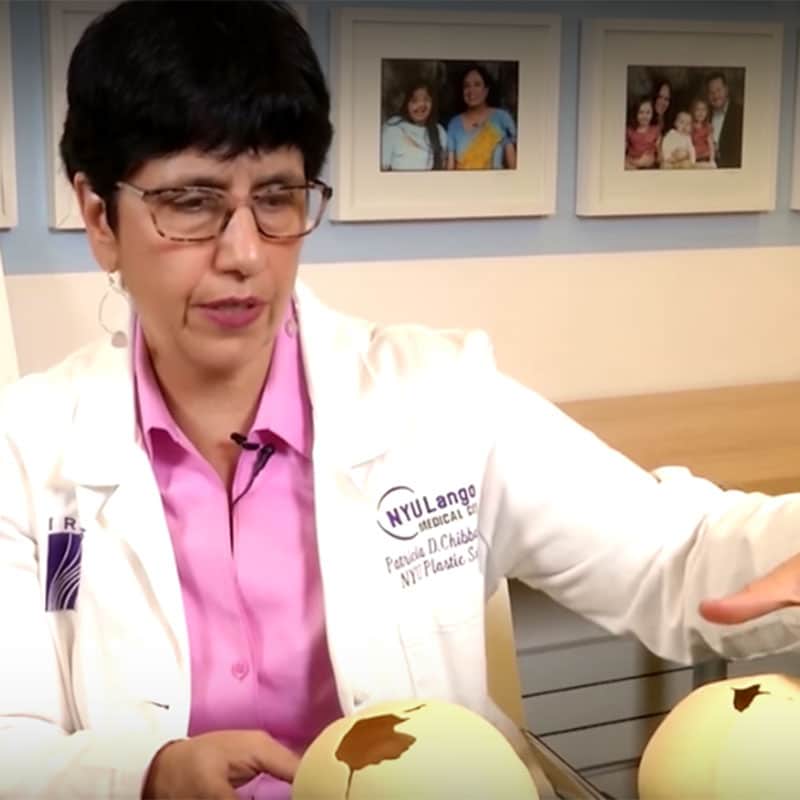Living with Cleft Lip and/or Palate
Home > Craniofacial Conditions > Cleft Lip and/or Palate > Living with Cleft Lip and/or Palate
Feeding Difficulty and Other Considerations for Babies with Cleft Lip and/or Palate
Caring for a child with cleft lip and/or palate can be complex depending on the severity of the case.
Families should be prepared to work with a team of doctors and specialists to care for a child with a cleft even after the initial repair and reconstructive procedures have been completed. These specialists on a patient’s comprehensive care team can include surgeons (who specialize in oral, plastic, and ear/nose/throat (ENT) surgeries), ear, nose, throat specialists (ENTs), pediatricians, orthodontists, auditory specialists, speech therapists, nutritionists, genetic counselors, social workers, and psychologists.
During the newborn period, especially prior to surgical repair, feeding difficulty is one of the most immediate concerns. Babies with cleft lip alone can typically generate enough suction to breast-feed effectively, but those with cleft palate may have difficulty sucking during feeding.
Feeding Difficulty with Cleft Palate
Infants with a cleft in their palate may have difficulty feeding, as indicated by:
- Choking, gagging, or coughing during or after feeding
- Milk coming back up through the nose
- Vomiting
- Crying, back arching, watery eyes, furrowing eyebrows during feedings
- Poor weight gain or even weight loss
- Difficulty with transitioning food types at appropriate ages (for example, unable to transition from a specialized bottle to a cup, or difficulty transitioning later to purees and table foods)
To address feeding challenges, various specialized products can be used:
- Specialized bottle nipples with one-way valves
- Squeezable bottles
- Dental appliances used to cover the cleft palate
Experts also recommend the following to facilitate improved feeding:
- Burp frequently (approximately every 5 minutes) to avoid nasal regurgitation and building up of intestinal gas
- Feed in a semi-upright angled position
- After feeding, keep the baby in a semi-upright position to help him/her keep the milk down
- Feeding time should take 30 minutes or less. If it is taking longer, it may be time to switch to a faster flow nipple.
- If the baby is not feeding well, is becoming dehydrated (no wet diapers in >6 hours), or is not gaining weight appropriately, a medical provider and/or feeding therapist should be consulted right away.
For additional information on recommended feeding systems/products and techniques, please refer to the following resource:
American Cleft Palate-Craniofacial Association’s “Feeding Your Baby” materials Post-surgery Care for Infants
Guidance for Post-surgical Care
The required care post-surgery will vary depending on which procedure has been performed. After most cleft lip repairs, the surgeon may recommend applying elbow restraints to prevent the infant from touching the stitches. Another way to keep the infant’s hands away from the wound is to keep them swaddled. It is also important to follow the doctor’s feeding instructions following surgery to allow proper healing of the repaired area. Typically, stitches will either dissolve or be removed within five days. The surgical scar may appear to become bigger and redder for a few weeks after surgery, but this will likely fade gradually with time.
After a cleft palate repair, an overnight stay is usually recommended to monitor the baby’s airway and ability to breathe properly. Although the child may not eat or drink as much as usual immediately after surgery, it is important to follow the surgeon’s advice on feeding so that the palate heals properly. For example, drinking from a nipple or using a pacifier should be avoided, and most experts recommend that the child transition to using a sippy cup without a valve post-surgery. Restraints to avoid touching of the surgical site, along with pain control using acetaminophen may also reduce the baby’s discomfort in the post-surgical period.
Caring for a child with cleft lip and/or palate can be complex depending on the severity of the case. Families should be prepared to work with a team of doctors and specialists to care for a child with a cleft even after the initial repair and reconstructive procedures have been completed. These specialists on a patient’s comprehensive care team can include surgeons (who specialize in oral, plastic, and ear/nose/throat (ENT) surgeries), ear, nose, throat specialists (ENTs), pediatricians, orthodontists, auditory specialists, speech therapists, nutritionists, genetic counselors, social workers, and psychologists.
Special Considerations for Newborns and Infants with Cleft Lip and/or Palate
During the newborn period, especially prior to surgical repair, feeding difficulty is one of the most immediate concerns. Babies with cleft lip alone can typically generate enough suction to breast-feed effectively, but those with cleft palate may have difficulty sucking during feeding. To address feeding challenges, various specialized products can be used:
- Specialized bottle nipples with one-way valves
- Squeezable bottles
- Dental appliances used to cover the cleft palate
Experts also recommend the following to facilitate improved feeding:
- Burp frequently (approximately every 5 minutes) to avoid nasal regurgitation and building up of intestinal gas
- Feed in a semi-upright angled position
- After feeding, keep the baby in a semi-upright position to help him/her keep the milk down
- Feeding time should take 30 minutes or less. If it is taking longer, it may be time to switch to a faster flow nipple.
If the baby is not feeding well, is becoming dehydrated (no wet diapers in >6 hours), or is not gaining weight appropriately, a medical provider and/or feeding therapist should be consulted right away.
For additional information on recommended feeding systems/products and techniques, please refer to the following resources:
Sandi Aubuchon, President of Dr. Brown’s Medical discusses nutrition for babies with cleft and craniofacial conditions.
Post-surgery Care for Infants
The required care post-surgery will vary depending on which procedure has been performed. After most cleft lip repairs, the surgeon may recommend applying elbow restraints to prevent the infant from touching the stitches. Another way to keep the infant’s hands away from the wound is to keep them swaddled. It is also important to follow the doctor’s feeding instructions following surgery to allow proper healing of the repaired area. Typically, stitches will either dissolve or be removed within five days. The surgical scar may appear to become bigger and redder for a few weeks after surgery, but this will likely fade gradually with time.
After a cleft palate repair, an overnight stay is usually recommended to monitor the baby’s airway and ability to breathe properly. Although the child may not eat or drink as much as usual immediately after surgery, it is important to follow the surgeon’s advice on feeding so that the palate heals properly. For example, drinking from a nipple or using a pacifier should be avoided, and most experts recommend that the child transition to using a sippy cup without a valve post-surgery. Restraints to avoid touching of the surgical site, along with pain control using acetaminophen may also reduce the baby’s discomfort in the post-surgical period.
Resources for the Craniofacial Community
myFace provides individuals and families living with a facial difference access to holistic comprehensive care, psychosocial services, education, resources and support that pave the way for better outcomes.







